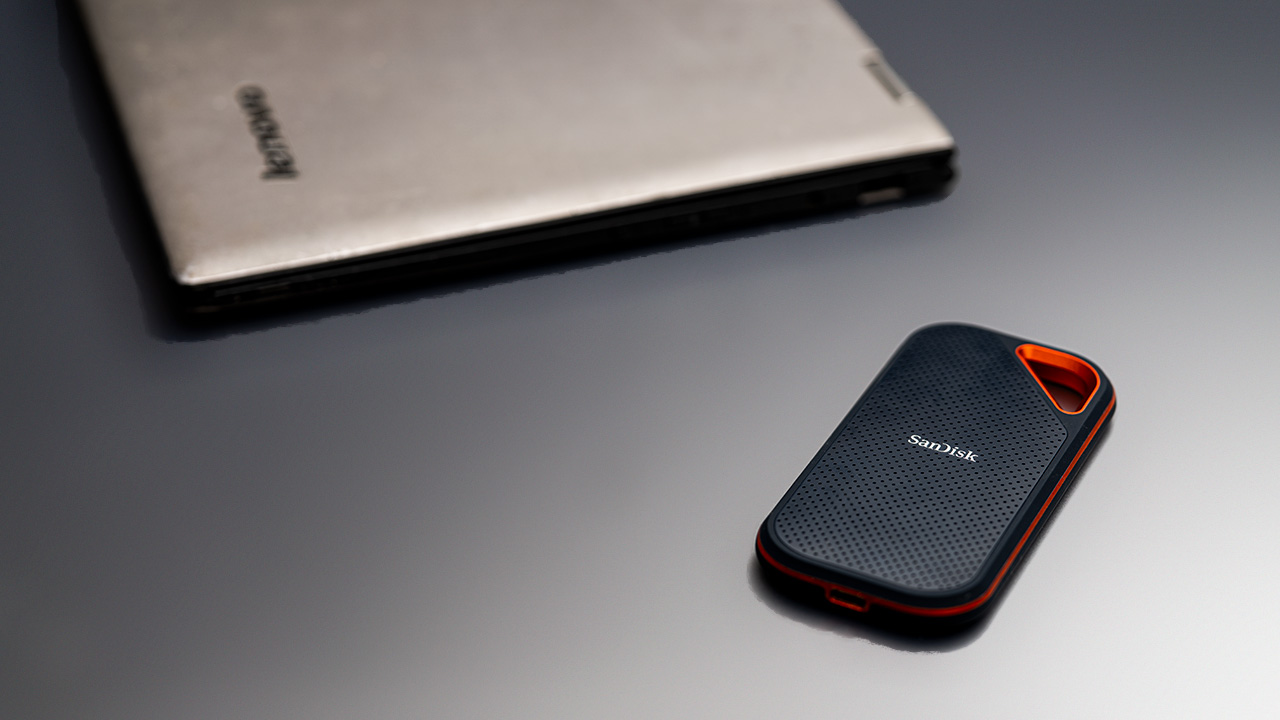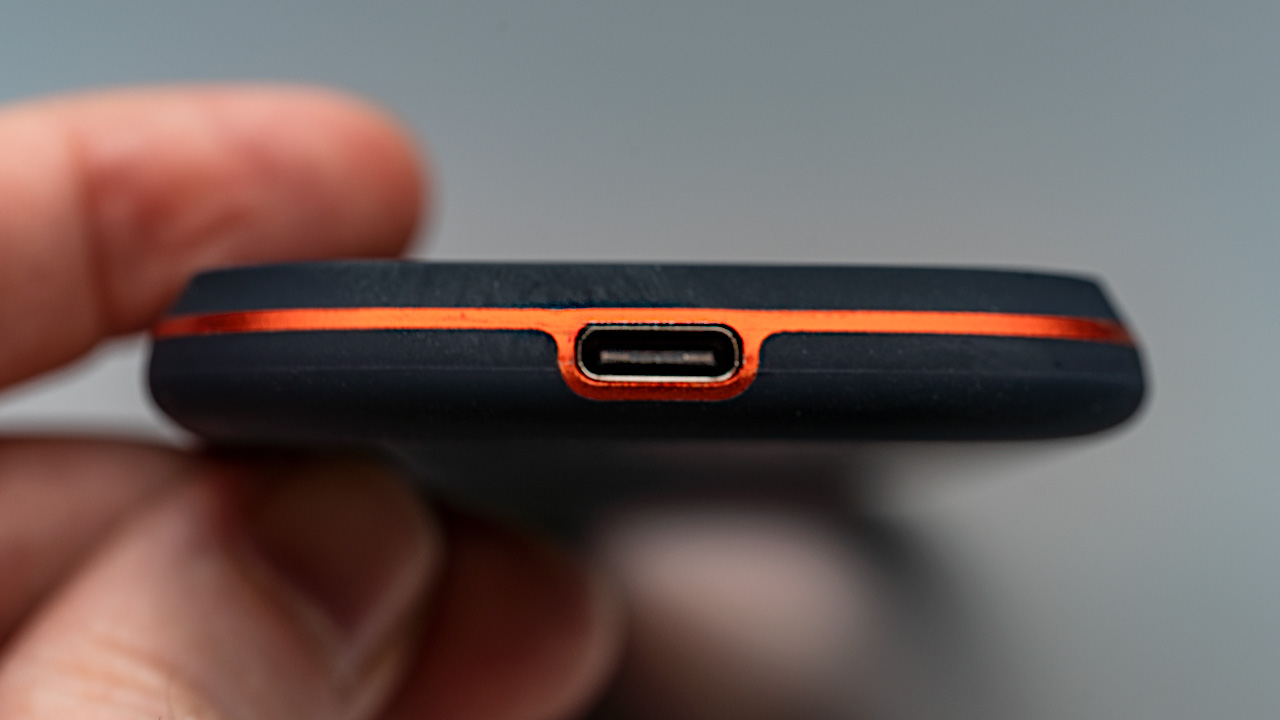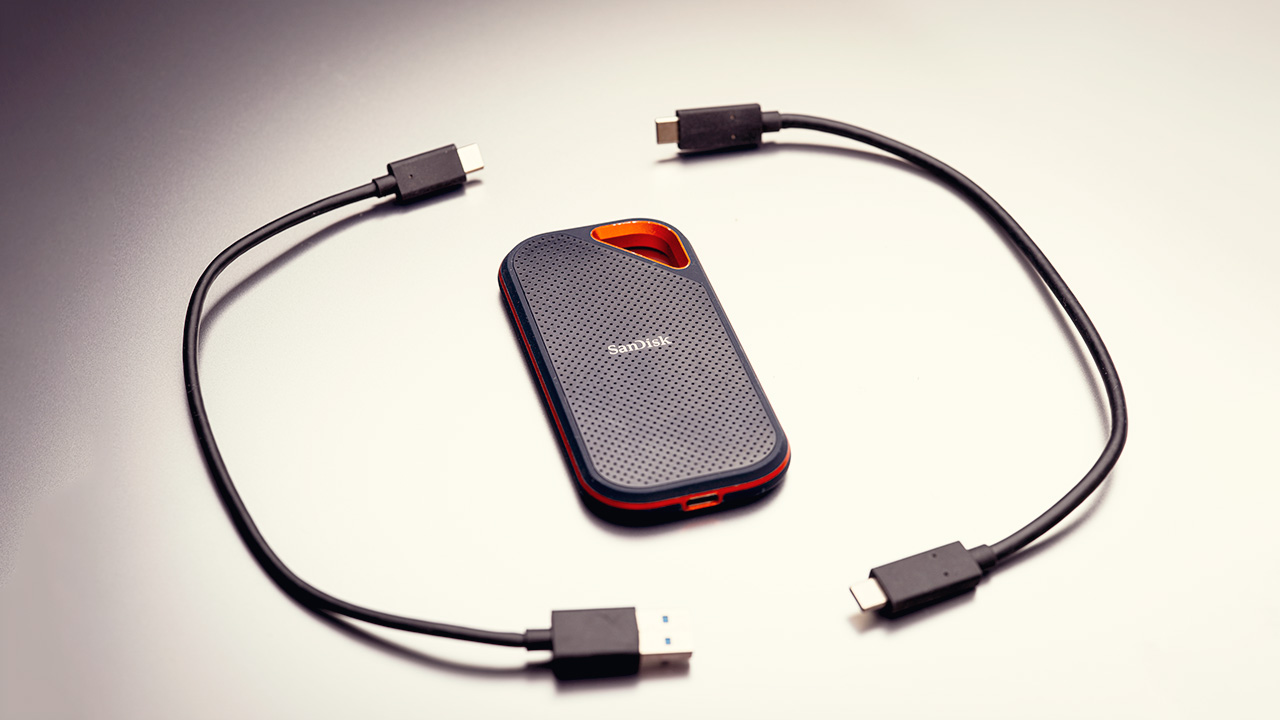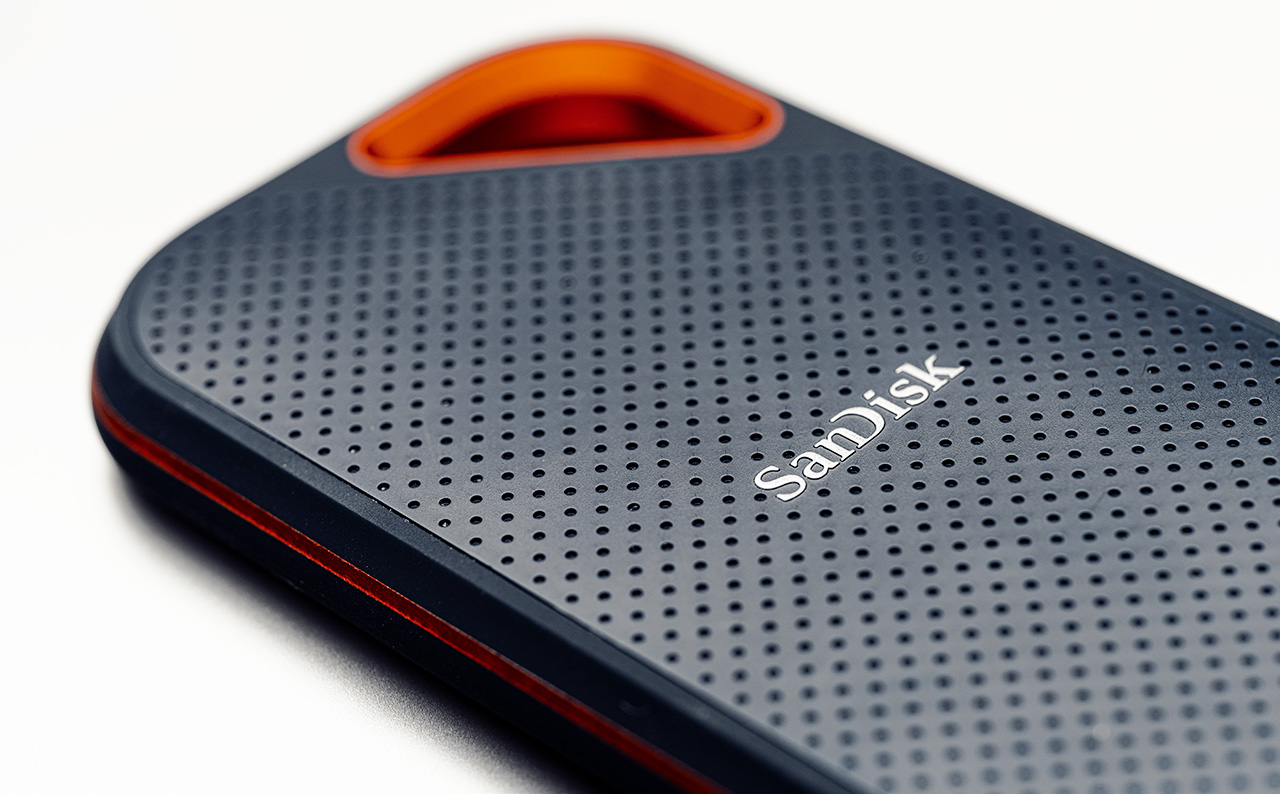Today we will be taking a look at the second generation Sandisk Extreme Pro SSD to see how far this new generation of NVME drives had come.
Back in 2020, we looked at the first Generation of SanDisk’s professional series of SSDs, and today we will review the second generation which promises to provide up to 2X the transfer speeds using NVMe technology and USB 3.2 20Gb/s (Gen 2×2).
Sandisk’s latest SSD NVME
The USB 3.2 Gen2x2 Type-C hurdle
Before we go any further it is important to understand the main difference between this second-generation drive and the first one and how it may or may not affect your buying decision.
While the first-generation drive used the now very common USB 3.1 Gen 2 which has a maximum transfer rate of 10Gb/s (or 1250 MB/s, in theory of course) the second-generation version doubles this speed to 20Gb/s (or 2500 MB/s, again, in theory) using the USB Implementers Forum super convoluted USB 3.2 Gen 2×2 name scheme.
So far this all sounds great (maybe aside from the name that is), but the problem is that at the time of writing this, in mid-2021, there are almost no laptops if any, and very few motherboards that natively support USB 3.2 20Gb/s.
If you have a desktop PC your best bet is to buy an expansion card (like this one from Gigabyte or this inexpensive one by IO CREST), which is exactly what we had to do since without it and even when connected to a Thunderbolt 4 port on our brand new computer we were still getting only 10Gb/s transfer speeds (if you want to understand why this happens you can read this Anandtech article and some of the comments to it, but be warned this rabbit hole is deep).
USB 3.2 Gen 2×2 support
Build and first use
The external design of the Extreme Pro V2 is basically identical to the first version. The only way to tell them apart is the Sandisk logo on the back, from our perspective it would be nice to have a big V2 marking somewhere as well.
The drive has the same semi-porous rubberized coating as the previous generation and a single USB-C connection (visually there is no way to tell the USB 3.2 Gen 2×2 compared to the older USB 3.2 Gen 2) and it has an IP55 rating with some protection against splashes and falls.
Other than the USB upgrade the only thing that really changed with this drive has to do with The AES 256-bit hardware-accelerated password-protection support. We didn’t find a need for it so far but if you store sensitive content this might be something you want.
The drive comes with USB-C to USB-C and USB-C to USB-A cables which are both about 30cm long, perfect for a laptop but still a bit too short for comfort if you are working on a desktop and need to connect to the back of the computer.
Cables are still too short for desktops
When we first tested it with our newest Desktop computer which has TB4 it didn’t seem to work with the supplied USB-C to USB-C cable and was not detected by the computer. Surprisingly, it was detected by a different USB-C cable but initially produced extremely slow read and write speeds (around 40MB/s).
After making sure that there was nothing wrong with our test system, we realized that other users also ran into these issues (see for example on the Sandisk forums here). What seemed to resolve this for us was performing a full format for the drive (not the regular quick format).
After the full format, the drive seems to perform much better but we still needed an add-on card so we got one from Gigabyte (the GC-USB 3.2 GEN2X2) which worked with our motherboard out of the box without any drivers – hurray!
The Gigabyte GC-USB 3.2 GEN2X2 add on card with USB 3.2 Gen 2×2 support
Quick note: we later realized that some of the USB Type-A connections on that computer are operating way too slowly – we are still investigating and we double-checked our results below on another fast computer just to be sure.
SanDisk Extreme PRO Portable SSD performance
As usual, we performed two types of tests: a synthetic test using the Crystal Disk Mark 8 software and a real-world test transferring over 200GB of videos, stills, and other files to the drive and back with different cables and on different connections.
All these tests were done using our new PC equipped with Ryzen 9 5900X processor, Asus ProArt B550-Creator motherboard (with dual TB4 ports), 500GB WD BLACK SN850 NVMe SSD and 1TB WD BLACK SN750 NVMe SSD, 64GB of 3200MHz DDR4, and the latest Win 10 Pro.
Sandisk Extreme Pro SSD II with USB 3.1 (USB-A to USB-C):
- Crystal Disk Mark 8 – Read – 1058MB/s; Write – 1031MB/s.
- Real-world Manual transfer – Read – 580MB/s; Write – 578MB/s.
Just a reminder, the V1 demonstrated exactly the same real-world performance on our previous review so you won’t be gaining and speed by using the V2 drive on a USB 3.1 connection.
Sandisk Extreme Pro SSD II with Gigabyte GC-USB 3.2 GEN 2 2X2 connection (USB-C to USB-C):
- Crystal Disk Mark 8 – Read – 2083MB/s; Write – 2081MB/s
- Manual transfer – Read – 746MB/s; Write – 689MB/s.
As you can see with the adapter we get the promised syntactic score boost but the actual speed in our real-world test is only between 20-30% faster (this can be more or less depending on the type of files you will be moving).
Conclusion
We started this review thinking that this is going to be a quick look at a straightforward update of a great pro-level portable drive, the same design as last year but with significantly better performance at a slightly higher price.
It turns out that it is much more complex than that. To get the most out of this drive you simply must have hardware support for USB-C 3.2 Gen 2×2. If you don’t, you are stuck with a drive that performs at about the same speeds as the previous generation with better encryption as the only bonus.
In all honesty, we would really prefer it if this drive just used USB 4 or Thunderbolt and despite the potential price increase, the current lack of 20Gb/s supported devices, and the direction in which we see the computing industry heading (i.e., USB 4 and TB 3 and now 4), means that releasing this drive with USB 3.2 support makes this a very difficult sell in our opinion.
Bottom line: if you are going to use this with USB-C 3.2 Gen 2×2 supported computers – this is a great option at a reasonable price. If not, either stick with V1 or move up to TB3 based drives – just keep in mind that you are going to pay a hefty premium for that, at least for the time being.
So which drive should you buy?
Pricing
When it comes to pricing, the 1TB version of the V2 that we tested currently sells for $230 (you can buy it in capacities ranging from 500GB to 4TB). You can also buy the V1 at a similar capacity for just under $180 (although this drive goes only up to 2TB).
You can check out more LensVid exclusive articles and reviews on the following link.

You can support LensVid by shopping with our affiliate partners
Affiliates: Amazon, B&H, Adorama and E-bay.
Why should you trust us?



